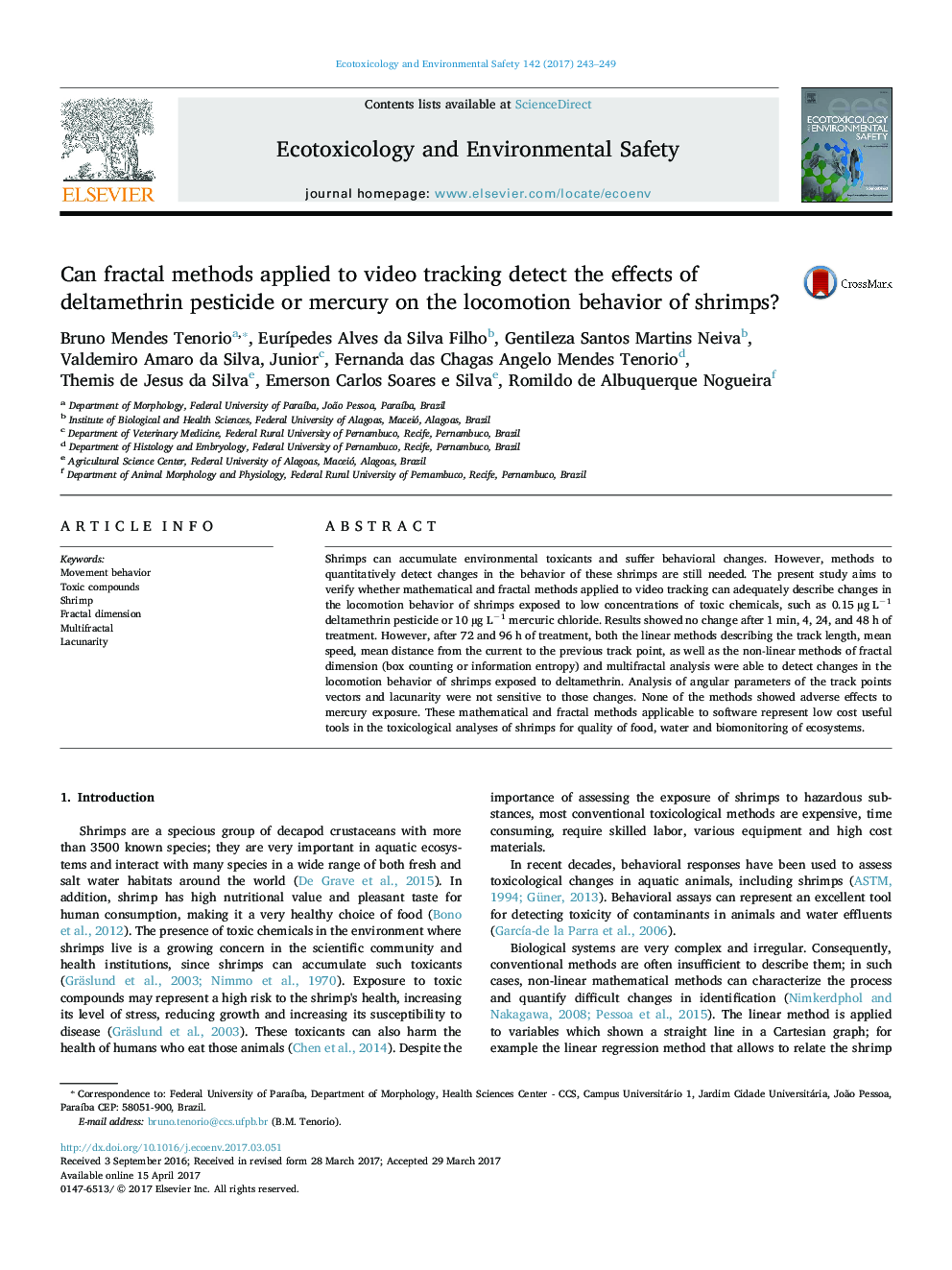| کد مقاله | کد نشریه | سال انتشار | مقاله انگلیسی | نسخه تمام متن |
|---|---|---|---|---|
| 5747608 | 1618922 | 2017 | 7 صفحه PDF | دانلود رایگان |
- Exposure to deltamethrin induced changes in the locomotion behavior of shrimps.
- Fractal dimension and multifractality detected changes in the behavior of shrimps.
- Lacunarity was not able to detect behavioral changes of shrimps.
- These methods applicable to software represent useful tools in analyzing shrimps.
Shrimps can accumulate environmental toxicants and suffer behavioral changes. However, methods to quantitatively detect changes in the behavior of these shrimps are still needed. The present study aims to verify whether mathematical and fractal methods applied to video tracking can adequately describe changes in the locomotion behavior of shrimps exposed to low concentrations of toxic chemicals, such as 0.15 µg Lâ1 deltamethrin pesticide or 10 µg Lâ1 mercuric chloride. Results showed no change after 1 min, 4, 24, and 48 h of treatment. However, after 72 and 96 h of treatment, both the linear methods describing the track length, mean speed, mean distance from the current to the previous track point, as well as the non-linear methods of fractal dimension (box counting or information entropy) and multifractal analysis were able to detect changes in the locomotion behavior of shrimps exposed to deltamethrin. Analysis of angular parameters of the track points vectors and lacunarity were not sensitive to those changes. None of the methods showed adverse effects to mercury exposure. These mathematical and fractal methods applicable to software represent low cost useful tools in the toxicological analyses of shrimps for quality of food, water and biomonitoring of ecosystems.
Journal: Ecotoxicology and Environmental Safety - Volume 142, August 2017, Pages 243-249
